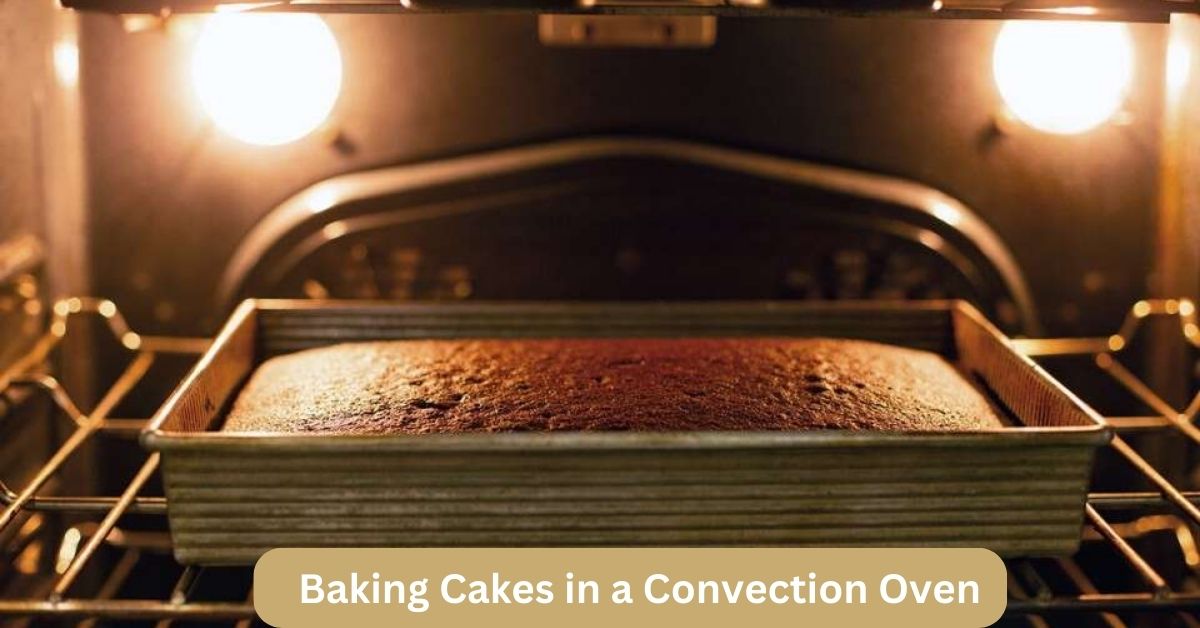Do you want to bake a cake with a convection oven but do not know how? Or are you fed up with unevenly baked cakes? But either way, you’ve come to the right place. Because today, our expert team will help you. From today, you will never have any trouble from start to finish, making a cake in a convection oven. Our team will help you bake the cake perfectly.
In today’s detailed, informative description, we have divided the topic into several parts. Let’s find out what they are:
Is a Convection Oven Better For Baking: Here, we have discussed in detail whether a convection oven batter is better or not.
How To Bake A Cake In A Convection Oven: Here, we have discussed in detail how to bake a cake in a convection oven in 7 steps.
Advantages of Using a Convection Oven to Bake: In this section, we showed some benefits of using a convection oven.
Let’s get started
Is a Convection Oven Better For Baking a cake
Yes, use a conventional oven batter for baking cakes. Convection ovens have advantages, as the circulating fan ensures even cooking and a crispier crust. We saw they are great for cakes with more sugar, giving a lighter texture and a tasty caramelization on the outside.
Also, we saw that the convection oven is an option for some types of cakes, such as:
- Those with a higher sugar content or
- Those that are meant to be crispy on the outside.
The fan in the oven helps the cake’s sugars caramelize, making the crust tastier and the texture lighter. Convection ovens cook cakes evenly, preventing hot spots and ensuring even baking.
Well, now you know that a convection oven is better for baking cake. So, next, our team is going to inform you on how to bake a cake properly in a convection oven.
Baking Cake In A Convection Oven with 7 Steps
The below seven steps are very important for you:
Preheat the Convection Oven
Convection ovens cook food faster and more evenly than conventional ovens. When using a convection oven to bake a cake, make sure to lower the temperature and baking time a little. But do you know what the cake’s real temperature is? Well, if you don’t know, we have a resarchful post on “How Much Time Should You Preheat the Oven for a Cake?” So look at this post for more information.
However, preheat the oven to 25–30 degrees Fahrenheit (13–17 degrees Celsius) lower than the recipe calls for. To be safe when baking larger cakes, lower the temperature by 5 or 10 degrees.
Adjust the baking time
After fixing the temperatures, you have to adjust the baking time. Do you know what time it is?
Most ovens take longer to cook food than convection ovens. About the convection ovens, we get a report that “convection ovens reduce cooking time by 25 percent.” So, you reduce the baking time by about 10–15 minutes. About 10 minutes before the cake is done, start checking to see if it’s done.
Mix, Pour, and Place in the Oven
Once you have preheated the oven, mix the cake batter according to the recipe. Pour the batter into a lightly greased and floured cake pan. Now, you are ready to use the oven. Just look at the oven and see that your oven has hit. Well, Put the cake pan in the oven. But keep in mind that if you’re baking multiple cakes (more than one cake), be sure to leave a 2-inch gap around each pan for proper heat circulation.
Note: If you notice your oven temperatures are not right, it means it’s time to fix it. Do you know how to fix it? If you don’t know, please look here How To Calibrate Your Electric, Analog, and Gas Oven
Use the right bakeware
Convection ovens work best with metal (light-colored, shallow pans) bakeware because it conducts heat really well. So, cook evenly and brown well with materials like:
- Aluminum,
- Stainless steel and
- Anodized aluminum.
While glass and ceramic bakeware are suitable for traditional ovens, they may not be as efficient in convection ovens. Their lower heat conductivity can lead to slower cooking and uneven browning. If using glass or ceramic bakeware, consider increasing the baking time by 5–10 minutes to ensure thorough cooking.
Our suggestion: Don’t use dark non-stick pans because they can make the cake brown too much.
Position the pan correctly
To ensure the heat spreads evenly, place the cake pan in the center of the oven. When you bake more than one cake at the same time, make sure there is enough space between them so air can flow.. About the rack placement, we have a post from our research team on “Proper Oven Rack Placement For Cakes.” we hope you will be clear from here.
Bake with the Door Closed
While the cake is baking, don’t open the oven door. Because opening the door will allow heat to escape, the cake will not cook evenly.
Check for Doneness and Remove it from the Oven
Check on your cake about ten minutes before it’s completed. One important thing to do when baking a cake is to check to see if it’s done. To ensure your cake is perfectly baked, insert a toothpick or skewer into the center of the cake. The cake is done when the toothpick comes out clean. You should bake the cake for a few more minutes if the toothpick still has batter on it. Remember that smaller cakes cook faster and that bigger cakes might need an extra ten minutes of baking.
When the cake is done, take it out of the oven and let it cool in the pan for 10 to 15 minutes before you frost it.
Benefits of Baking Cake in a Convection Oven
Faster Baking Time: It bakes faster because the air circulates and transfers heat quicker than in regular ovens.
If you want to know more details, go here: Convection Or Conventional Oven For Baking Cakes.”
Crispier Crust: The continuous movement of hot air in a convection oven helps remove moisture from the surface of the cake.
Reduced Overcooking and Browning: The even heat distribution in convection ovens minimizes the risk of hot spots or overcooked areas. It’s leading to a more evenly baked cake with consistent browning.
Cooking Multiple Cakes at Once: You can use convection ovens to bake many cakes at once without affecting their quality. The even heat distribution ensures that all cakes bake evenly, regardless of their position in the oven.
Energy Efficiency: Convection ovens are usually more energy-efficient because they cook faster and lose less heat. This can save you money on your energy bills in the long run.
4 Tips for Baking a Cake in a Convection Oven
- Reduce the temperature to prevent overcooking.
- The hot air that moves around in a convection oven takes care of rotating the cake for you. So, there is no need to turn it halfway through baking.
- The hot air circulates more evenly in the middle of the oven, so place your cake on the middle rack for the best results.
- Don’t cover the cake because it will keep the wetness in and stop the crust from burning.
Conclusion
Hopefully, from today’s informative discussion, you have learned how to bake a cake in a convection oven. By keeping the above seven simple steps and tips in mind, you can confidently create perfectly baked cakes every time. So, armed with your newfound knowledge, go ahead, fire up that convection oven, and bake.
As a 10 years veteran in the culinary industry, I have developed a passion for all things kitchen. With a deep understanding of food preparation and cooking techniques, I am a true kitchen specialist. My experience working in Khedmot kitchen has allowed me to hone my skills and become an expert in creating delicious and visually appealing dishes.
I am a creative and innovative chef, constantly experimenting with new ingredients and cooking methods to bring unique and memorable dining experiences to my customers. In addition to my culinary expertise, I am also highly organized and able to effectively manage a team of kitchen staff, ensuring that all tasks are completed efficiently and to a high standard.
I am dedicated to my craft and always strive to create exceptional dining experiences for my customers. Whether it’s developing a new menu, training my kitchen team, or working with local suppliers, I am always looking for ways to improve and take my kitchen to the next level.
If you’re looking for a skilled and passionate kitchen specialist, look no further. I am eager to bring my expertise to your team and help take your kitchen to the next level.


